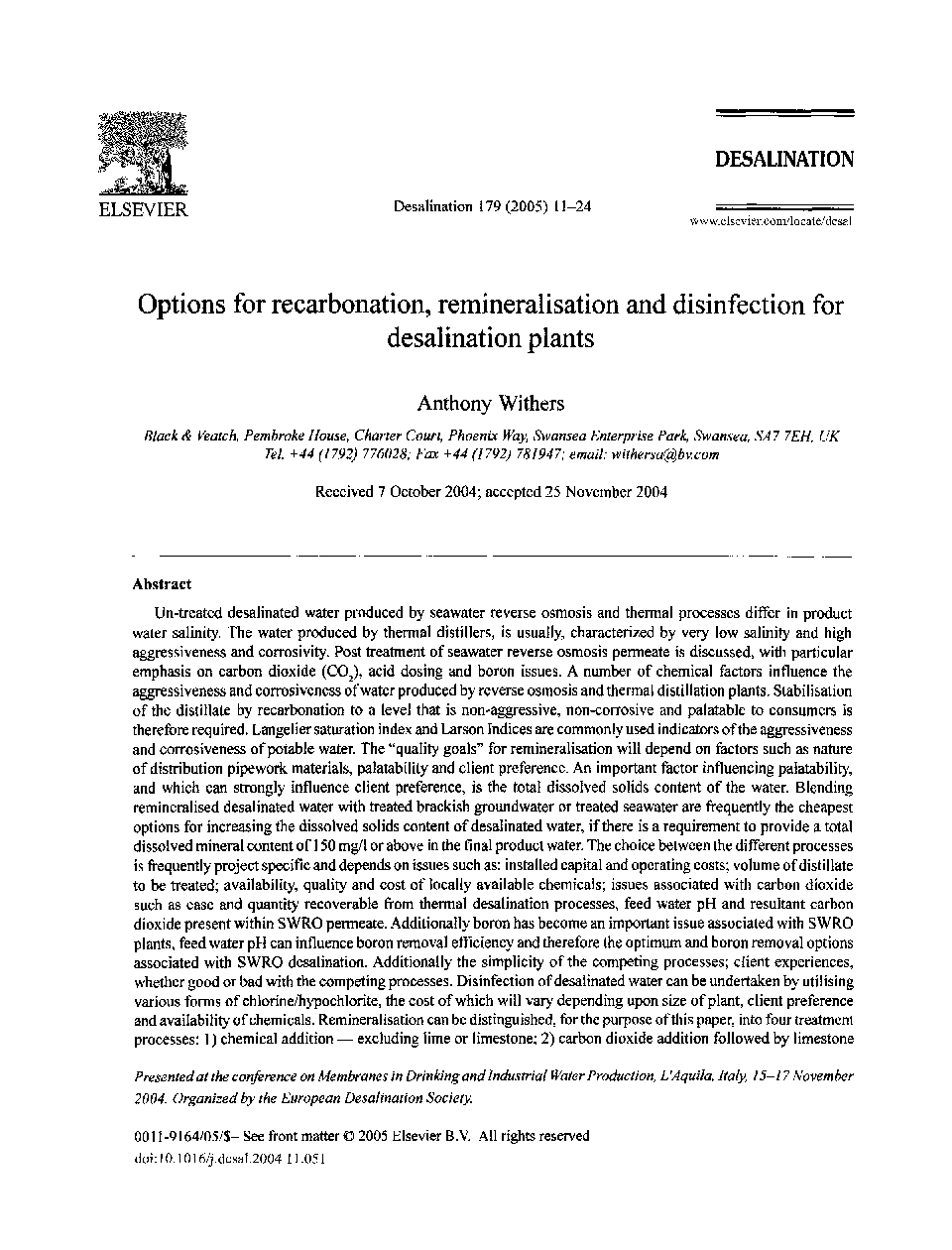| Article ID | Journal | Published Year | Pages | File Type |
|---|---|---|---|---|
| 9681086 | Desalination | 2005 | 14 Pages |
Abstract
Un-treated desalinated water produced by seawater reverse osmosis and thermal processes differ in product water salinity. The water produced by thermal distillers, is usually, characterized by very low salinity and high aggressiveness and corrosivity. Post treatment of seawater reverse osmosis permeate is discussed, with particular emphasis on carbon dioxide (CO2), acid dosing and boron issues. A number of chemical factors influence the aggressiveness and corrosiveness of water produced by reverse osmosis and thermal distillation plants. Stabilisation of the distillate by recarbonation to a level that is non-aggressive, non-corrosive and palatable to consumers is therefore required. Langelier saturation index and Larson Indices are commonly used indicators of the aggressiveness and corrosiveness of potable water. The “quality goals” for remineralisation will depend on factors such as nature of distribution pipework materials, palatability and client preference. An important factor influencing palatability, and which can strongly influence client preference, is the total dissolved solids content of the water. Blending remineralised desalinated water with treated brackish groundwater or treated seawater are frequently the cheapest options for increasing the dissolved solids content of desalinated water, if there is a requirement to provide a total dissolved mineral content of 150 mg/l or above in the final product water. The choice between the different processes is frequently project specific and depends on issues such as: installed capital and operating costs; volume of distillate to be treated; availability, quality and cost of locally available chemicals; issues associated with carbon dioxide such as ease and quantity recoverable from thermal desalination processes, feed water pH and resultant carbon dioxide present within SWRO permeate. Additionally boron has become an important issue associated with SWRO plants, feed water pH can influence boron removal efficiency and therefore the optimum and boron removal options associated with SWRO desalination. Additionally the simplicity of the competing processes; client experiences, whether good or bad with the competing processes. Disinfection of desalinated water can be undertaken by utilising various forms of chlorine/hypochlorite, the cost of which will vary depending upon size of plant, client preference and availability of chemicals. Remineralisation can be distinguished, for the purpose of this paper, into four treatment processes: 1) chemical addition - excluding lime or limestone; 2) carbon dioxide addition followed by limestone or dolomitic dissolution; 3) carbon dioxide addition followed by lime dosing; 4) blending with a water containing high mineral content. The methods available for recarbonation and remineralisation offer varying economic and technical merits and disadvantages. The paper explores the economic and technical differences of the various processes.
Related Topics
Physical Sciences and Engineering
Chemical Engineering
Filtration and Separation
Authors
Anthony Withers,
